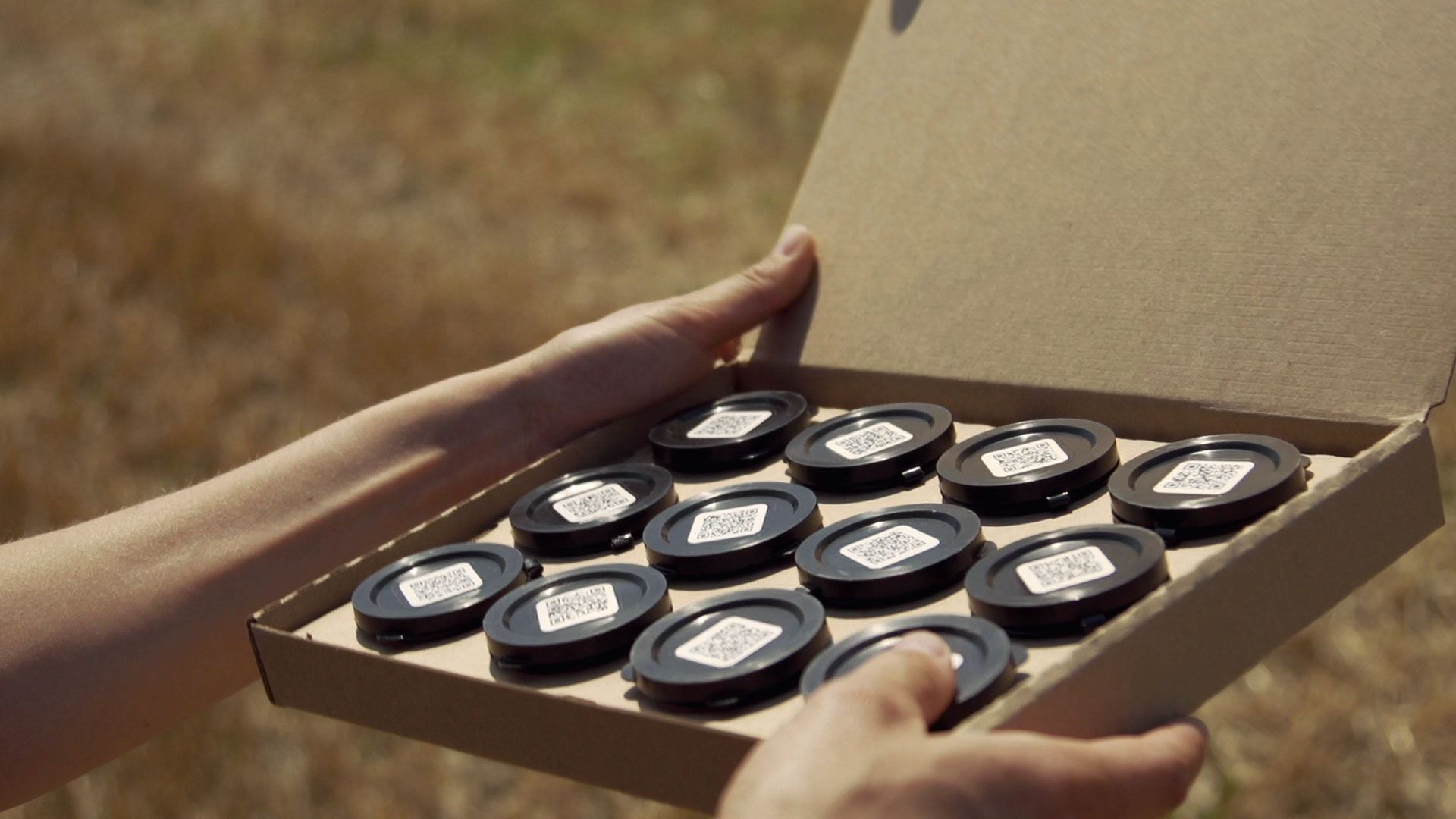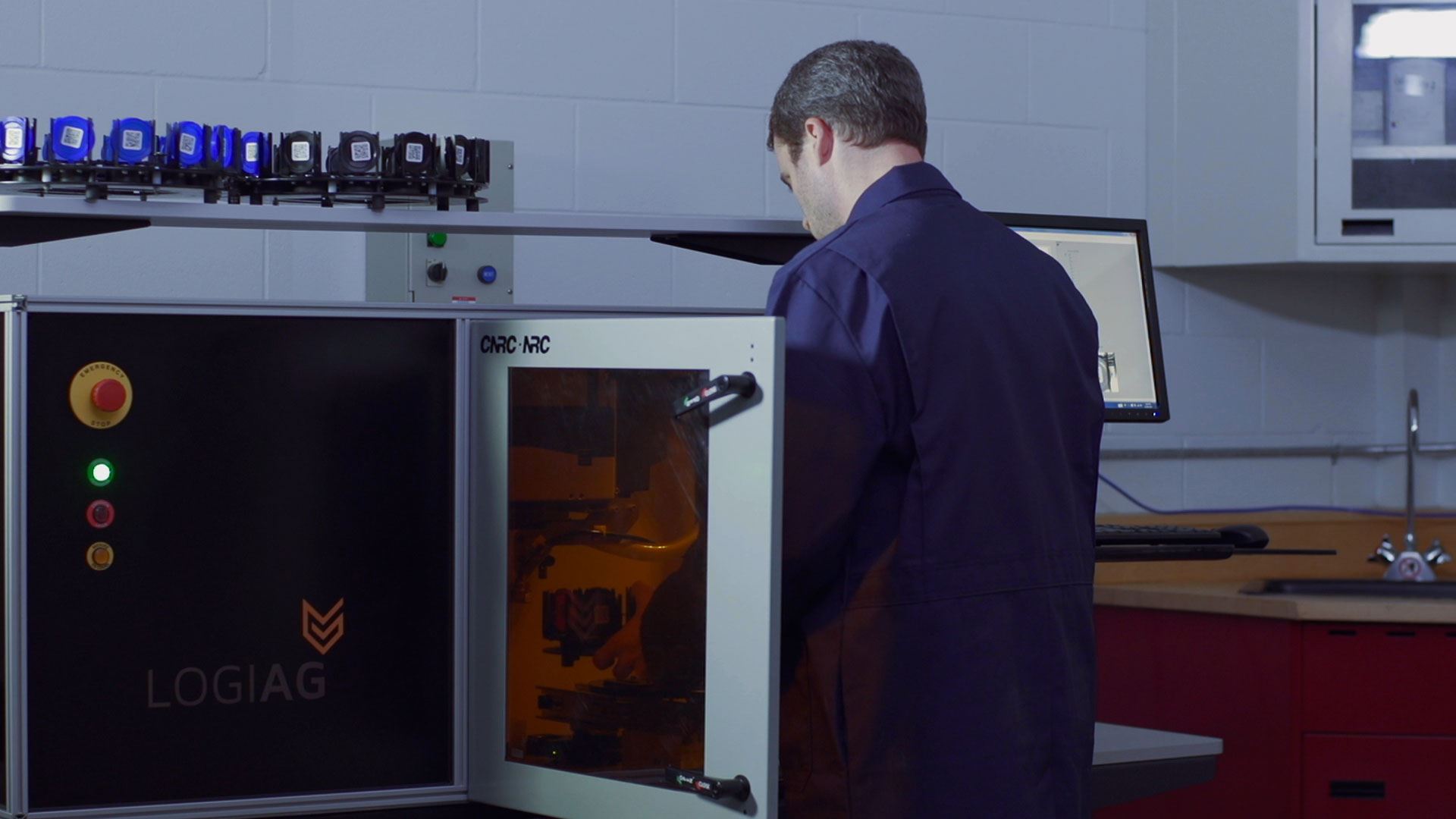By Joe Dales, Editor, Farms.com Ltd.
Precision Agriculture is quickly changing many of the current farming practices and to achieve the potential of this powerful technological revolution more sophisticated soil testing information will be required. To develop smaller management zones in a field, soil data needs to be generated that has accurate gps sampling connected to accurate small sample soil analysis results. The smaller management zone soil data must then be integrated with Agronomic intelligence and provide direction to the planting equipment so that the potential of precision farming can be achieved through variable rate fertility, variable rate seeding populations and multi-hybrid planting field plans.
gps sampling connected to accurate small sample soil analysis results. The smaller management zone soil data must then be integrated with Agronomic intelligence and provide direction to the planting equipment so that the potential of precision farming can be achieved through variable rate fertility, variable rate seeding populations and multi-hybrid planting field plans.
Technological advancements in soil testing, analysis and data management are long overdue and represent a major constraint to the farmer’s adoption and profit realization of precision agriculture.
Logiag Inc is a company that is introducing a new soil data management system called LASERAG that can help crop input suppliers, retailers and agronomists to provide farmers with the precise and accurate soil test results they need to take their field productivity to the next level.
The LASERAG system has four components:
- Breakthrough Soil Analysis Technology: an innovative laser induced breakdown spectroscopy (LIBS) technology has been adapted to analyse agricultural soil samples. By focusing an intense laser beam on a dry and compressed soil sample, a plasma is created at temperatures of up to
 25000C. The electrons of all the atoms in the plasma are excited and change energy levels. Once the beam is cut, the electrons settle back to their original levels and emit atom specific photons that are captured. The nutrients present in the sample are thus identified and quantified. The results are presented as standard soil test results. Each sample is analysed 3000 times in a few seconds eliminating all human error and increasing precision and repeatability. The new system is accurate 100% of the time on all nutrients.
25000C. The electrons of all the atoms in the plasma are excited and change energy levels. Once the beam is cut, the electrons settle back to their original levels and emit atom specific photons that are captured. The nutrients present in the sample are thus identified and quantified. The results are presented as standard soil test results. Each sample is analysed 3000 times in a few seconds eliminating all human error and increasing precision and repeatability. The new system is accurate 100% of the time on all nutrients.
- A Cloud Based Soil Information Management Software has been designed for the service providers. The software allows the user to create customers fields, determined the sampling pattern, import shapefiles and soil maps. Once the soil test results are received the user can print various reports, make its prescriptions and produce the shapefiles for the variable rate applications. The soil test results are downloaded automatically each time the software is opened.
- A Smart Phone GPS Application for the Soil Sampler in the Field. The application synchronizes with the service provider software and the sampler can see himself as a blue dot in the field. All the sampling points are also identified and the app facilitates sampling decisions. Each sample is put in a small cup made of a porous plastic to enhance drying with a QR code on top. The QR code is read with the smart phone application. Once the top is closed, no other human being will touch the sample. The cups are put in boxes of a dozen dropped at the post office at the end of the day. No writing and no forms need to be filled out.
- The Soil Analysis Lab itself, where an oven, a press and the machine housing the laser are found, as well as a computer server with the lab software. The software converts photons measurements to nutrient levels, stores the results on the cloud and generates reports. Attached to the box is a computer screen that allows users to see what is going on as the samples are analysed. Logiag is currently working on the next generation of the system that will reduce the size of the machine and making its transport and installation simpler.
The company, Logiag Inc. was founded in 1999 by Charles and Jacques Nault and has 35 employees. Logiag plans to increase the growing network of input suppliers, retailers and agronomists using the LASERAG system. Farmers can access the LASERAG system by working with one of its providers who pay a competitive soil sample analysis fee. Logiag Inc. is also finalizing the LASERAG system with ISO 17025 certification which confirms the accuracy of the new soil analysis system. For more information visit the company’s LASERAG website at www.laserag.com email info@laserag.com Or call them at 450 427-3000
Backgrounder: Soil Analysis
Currently soil analysis is done using chemical methods. In Eastern Canada and US the most common method is Melhich3. Melhich was first discovered in the 1950’s and Melhich3 became widely used for soil analysis in the early 1980’s. Despite its strength and longevity, the problems with this method are numerous and well documented: reliance on proper handling of soil samples and chemical dosages by a lab technician, time consuming, reliance on various chemicals that must be discarded creating its own environmental dilemma, and inaccurate results at the edge of the detection spectrum for macronutrients such as Calcium. However the most striking problem relates to precision agriculture. Conventional chemical labs originated at a time when samples were collected in hand labelled bags and forms, and results were mailed back to clients printed as a table on a piece of paper. Despite some changes and internet use, this process is still in place. It might even be argued that for composite sampling this is ok. But it is ill adapted for the speed and efficiency required to support the development of precision agriculture. More importantly however, chemical methods such as Melhich3 have a relatively wide margin of error and we have found differences in results of up to 100% with the same sample sent to different labs. It is common to have a 25% standard deviation with results coming from the same lab on the same sample.
Click here to see more...